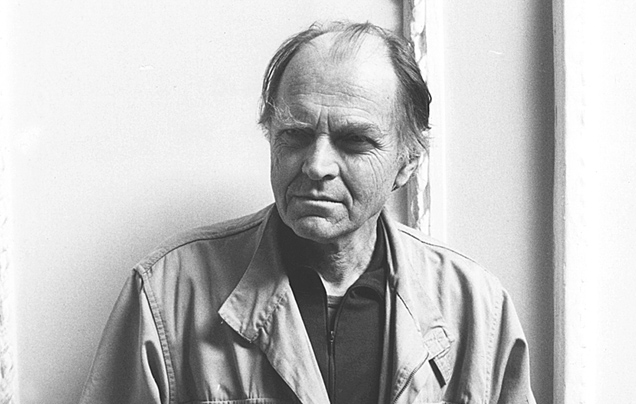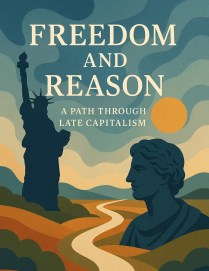The emergence of postmodernism as a distinct philosophical movement traces back back to the mid-twentieth century, with roots in various intellectual developments in art, literature, philosophy, and social theory. A significant precursor to postmodernist thought is found in the work of French philosopher and literary theorist Jacques Derrida, particularly his development of what he called “deconstruction” in the 1960s. Deconstruction challenged traditional notions of language, meaning, and truth, paving the way for postmodernist critiques of fixed categories and foundationalist epistemologies. Foundationalism posits the existence of a stable, unchanging group upon which knowledge, meaning, and truth are established and elaborated. The concept is prevalent in traditional Western philosophy and associated with the idea of a stable reality that can be grasped through fact and logic.
In the realm of literature, authors such as Jorge Luis Borges explored themes of fragmentation and indeterminacy of traditional narrative structures that resonated with later postmodernist concerns (see Borges 1946 short story “On Exactitude in Science,” which inspired Jean Baudrillard insights in his 1981 Simulacra and Simulation). Jean-François Lyotard’s 1979 The Postmodern Condition: A Report on Knowledge is may be regarded as the seminal text that brought postmodernism to broader attention. In this work, Lyotard famously describes the postmodern condition as characterized by an incredulity towards grand narratives and a skepticism towards meta-narratives of progress and enlightenment. Michel Foucault’s critiques of power, knowledge, and the construction of truth played a significant role in shaping postmodernist thought, as well, particularly through his historical analyses of discourses and institutions. (Foucault is regarded as the father of queer theory, a subject I tackle in a forthcoming essay.)
Accompanying the denial of truth that comes with the claim of narrative multiplicity in postmodernism is a tolerance for deceit and deception. Since, in the postmodernist gaze, no narrative is objectively true, only “true” because power imposes a situation or desire and feelings find the narrative aligning, no narrative is false, either. This is the work of the nihilism lying at the heart of the philosophy that reduces ontology to the epistemic fog of relativism. Put another way, having disappeared the world into perception and methodological anarchy, anything goes. Those who subscribe to postmodernist extremism have no problem lying to others or to themselves about who or what they are—if they think they’re something they aren’t or can’t be, they can’t be wrong about that because there is no real truth to it, only what they think they ought or want to be, i.e., “my truth.”
This is a big part of what lies behind the “post-truth“ condition. This condition is often described as a cultural and political climate where objective facts hold diminishing sway in public discourse. In this situation, emotions and ideological affiliations outweigh verifiable information. Several factors are theorized to contribute to this phenomenon, including the proliferation of digital media, the rise of echo chambers and filter bubbles on social media, declining trust in traditional institutions, increasing political polarization, and emotional appeals in communication. Political and cultural elites tell us that the consequences of the post-truth condition include erosion of trust in democratic institutions, polarization of public discourse, spread of misinformation and conspiracy theories, and destabilization of shared reality.
Addressing these challenges necessitates promoting media literacy, critical thinking skills, and a renewed commitment to the value of objective truth in public discourse and decision-making. In spirit, this is a good set of interventions; in practice it depends on who is doing the intervention and the standpoint from which they operate. In a situation where it’s corporate state that is organizing the post-truth condition and its the progressive-captured extensions of this apparatus doing the work to bring everybody back to the truth, that’s a problem. To be sure, misinformation is a thing, but associating this with the propaganda term, “conspiracy theory” gives away the game. The shared reality that is being destabilized is the hegemonic ideology that perpetuates the corporate state. That hegemony is not the hegemony of scientific materialism but of corporate profit.
In November 2021, in Refining the Art and Science of Propaganda in an Era of Popular Doubt and Questioning, I discuss the annual common theme programming at the college where I teach, which that year carried this title: “Truth: Information, Misinformation, and Democracy.” As I described it then, “the series of events reeked of progressive angst over the rise of the popular voice and the concomitant decline in the faith in the academic priesthood, with the implication that faculty should be aware of some line established by some commissar in some high office somewhere.” We see this when the corporate state directs pharmaceutical companies and the public health apparatus to use the population for medical experimentation without regard to the ethics of Nuremberg established in the wake of the Holocaust. Why should the Code be regarded if there is no truth behind ethics? The program’s emphasis on masks and vaccines, as well as racial justice, may it feel like it hailed from a desire for shared reality, but in truth it moved from the imperative of corporate profit and advanced the program of political disorganization by promulgating misinformation under the guise of combating misinformation.

Part of the post-truth condition is secured by the widespread socialization of a moral philosophy called consequentialism. Consequentialism, which holds that normative appropriateness depend only on the consequences of one’s actions and that the appropriateness of the consequences is in the eye of the beholder, which is relative to the individual (however organized or perceived as groups), which includes hedonism, shatters any deontological commitment (absolute or moderate) to common moral intuitions, intuitions that may very well be determinable by the methods of scientific materialism (such as universal humans rights), which are now rejected because of the methodological anarchy of postmodernism.
Holding to this view, is it any wonder that a man can trespass on the opportunities and spaces of women by claiming a “truth” from his point of view that he is a woman, too? The only ethic that matters is the one he asserts, since this is his truth not yours. The state is at his back, so if any truth is recognized, it is the one manifested by power. Not male power, mind you. Not in this case, anyway. Essentialisms are selectively allocated based on power, too.
Here’s the role of power in truth determination. The man claims he is “legally a woman,” as an official decree cannot actually change biological reality, but that comes along with the endorsements of the constellation of professional associations that legitimize the exploitation of gullible and vulnerable people by appealing the “evidence-based” medicine. Imagine the state declaring the world to be flat. It could. It just has no reason to. At the moment.
In my previous essay, I parenthetically noted my borrowing of language by Imre Lakatos, a Hungarian philosopher of mathematics and science. I want to follow up with Lakatos here. Lakatos introduced a framework for understanding the dynamics of scientific progress in The Methodology of Scientific Research Programs (published in 1978, posthumously, based on his lectures and notes from the 1960s and 1970s), which aimed to elucidate the complex interplay between evidence, theories, and heuristic strategies in the transformation and advancement of knowledge.

Central to Lakatos’ framework is the distinction between positive and negative heuristics, which he conceived as essential components in the evolution of scientific theories. Positive heuristics are characterized by their role in guiding scientific inquiry towards the formulation of new hypotheses and theories. They encompass the methodological principles and strategies that scientists employ to generate novel ideas, construct theoretical frameworks, and formulate conjectures about the natural world. Positive heuristics serve as catalysts for scientific innovation, driving the exploration of new avenues of research and the development of explanatory frameworks. Conversely, negative heuristics are concerned with the critical evaluation and refinement of scientific theories. They encompass the methodological criteria and principles used to assess the empirical adequacy, explanatory power, and predictive accuracy of existing theories. Negative heuristics operate by identifying and scrutinizing anomalies, inconsistencies, and empirical shortcomings within established theoretical frameworks. Through the process of critical appraisal and empirical testing, negative heuristics facilitate the revision, modification, or abandonment of theories that fail to withstand empirical scrutiny or adequately account for observed phenomena.
Lakatos’ scheme of positive and negative heuristics thus offers a dialectical perspective on the transformation of scientific knowledge. Rather than viewing scientific progress as a linear accumulation of facts or a straightforward march towards truth, Lakatos emphasizes the interplay between the generation of new ideas and the critical evaluation of existing theories. Scientific advancement, according to Lakatos, is characterized by a continuous process of hypothesis formation, empirical testing, and theoretical refinement, in which positive and negative heuristics play complementary roles.
This resonates with the central thesis of Thomas Kuhn’s 1962 The Structure of Scientific Revolutions. Kuhn argued that scientific progress is punctuated by periods of normal science, characterized by the dominant paradigm or theoretical framework, and revolutionary episodes, marked by paradigm shifts or scientific revolutions. In this context, positive heuristics correspond to the process of paradigm construction and the formulation of new scientific frameworks, while negative heuristics correspond to the process of paradigm evaluation and the identification of anomalies or inconsistencies within established paradigms.
I raise Lakatos here because, in his work, there is an alternative to the nihilism inherent in the postmodernist’s critique of scientific knowledge production. We can have our cake and eat it, too.
Lakatos described positive heuristics as a protective belt around what he called the “hard core,” a central, unalterable component of a scientific research program. The hard core consists of the fundamental principles, assumptions, and core beliefs that define a scientific theory and provide its theoretical foundation. If the hard core goes away, the program is dead. Positive heuristics operate to protect and reinforce the hard core by generating auxiliary hypotheses, additional assumptions, and ad hoc modifications that shield the core theory from empirical refutation.
In this sense, positive heuristics serve to rationalize and defend the core tenets of a scientific theory, even in the face of empirical anomalies or contradictory evidence. By elaborating auxiliary hypotheses or introducing supplementary assumptions, positive heuristics aim to reconcile discrepancies between theoretical predictions and observed phenomena, thereby preserving the coherence and integrity of the core theory. Thus, positive heuristics function as a kind of intellectual scaffolding that supports and sustains the edifice of scientific knowledge, shielding it from potential challenges or falsifying evidence.
Negative heuristics operate to challenge and refine scientific theories by identifying inconsistencies and empirical shortcomings that threaten the coherence or explanatory power of the core theory. Negative heuristics facilitate the critical evaluation and revision of scientific theories by subjecting them to empirical testing and scrutiny. Through the process of anomaly recognition and empirical testing, negative heuristics promote the progressive refinement and development of scientific theories, ultimately contributing to the advancement of scientific knowledge.

The case of Paul Feyerbend and his 1975 book Against Method: Outline of an Anarchistic Theory of Knowledge punctuates the difference between the postmodernistic approach (Feyerbend does not fit neatly in that box, which had not at that time fully emerged as a movement) and Lakatos’ more normative approach to scientific mythology. Feyerbend challenged the notion of a unified scientific method and questioned the authority of scientific institutions and dogmatic adherence to methodological rules. Feyerabend argued for methodological pluralism, advocating for the inclusion of diverse perspectives, methodologies, and heuristics in scientific inquiry. He famously proclaimed that “anything goes” in science, suggesting that there are no fixed rules or methodological constraints that should govern scientific practice.
To his credit, Feyerbend insists that scientists remain free to pursue unconventional ideas, challenge established paradigms, and experiment with alternative methodologies without fear of censorship or disciplinary reprisal. Ironically, this presumes a universal truth that lies beyond power that postmodernists reject. Rejection of universal and knowable truth is the essential error of postmodernist thought.
